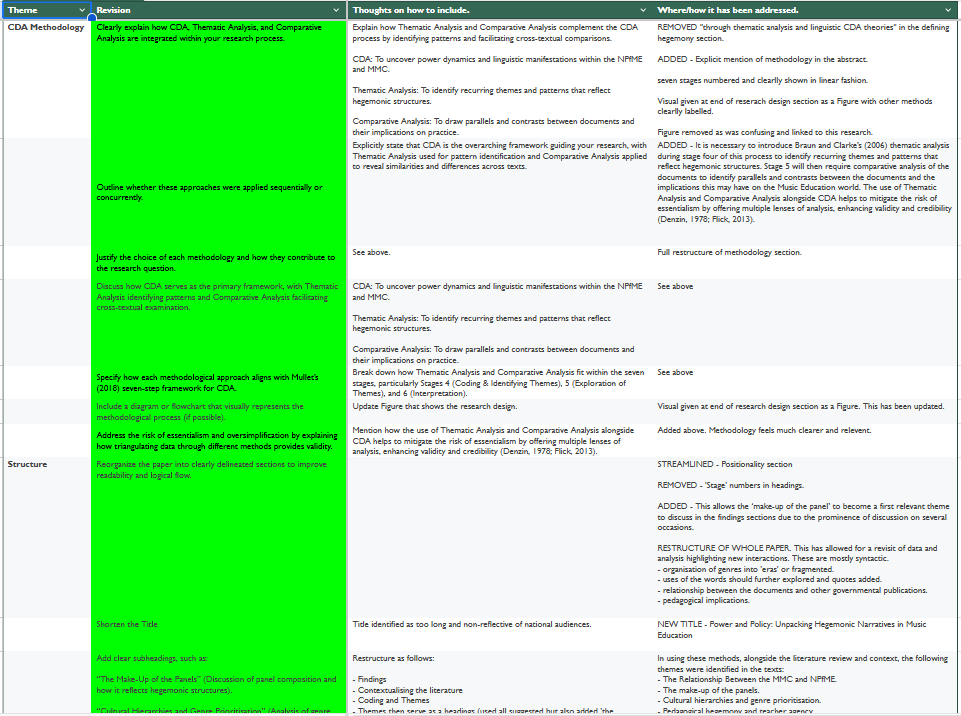Module 3: Click, Submit… Wait.
- ricketts15
- Apr 15
- 2 min read
Exploring the learning curve of publication, peer review, and finding your academic voice
If Module 2 was about digging deep into research, Module 3 was about sharing it—and doing so in a world that suddenly felt far more complex than I had imagined.
I began with a stack of questions:
Where should I publish?
What do editors want?
What even is peer review, really?
Turns out, the world of academic publishing is equal parts exhilarating and intimidating.
From Possibilities to Priorities
One of the first tasks was to explore potential journals (see below)—an incredibly useful process that quickly revealed just how specific and structured this world can be. Impact factors, word limits, referencing styles, editorial boards… it’s a lot.
What stood out for me during this process was the importance of fit. It wasn’t just about finding a journal that accepted music education research—it was about finding one aligned with my article’s themes, tone, and intention.
That led me to the British Journal of Music Education. It ticked all the boxes:
UK-based
Focused on the intersection of research and practice
Edited by scholars I’d been quoting for months
A space where music curriculum discussions genuinely mattered

Analysis of appropriate journals.
Peer Review: The Academic Rite of Passage
Until now, “peer review” had been something I’d vaguely understood as part of the publication process. Module 3 forced me to get up close with it. Double-blind review, reviewer reports, revision expectations—it all started to come into focus.
It’s not just about being judged. It’s about refining your work in dialogue with others. I started to see it as part of a wider scholarly conversation, and that helped frame my article not as a finished product, but as a contribution.
Article, Presentation, and the Big Submit
Alongside the journal research, Module 3 required both a conference-style presentation (attached)
and a full article submission. Crafting the presentation helped clarify my thinking—what the article was really trying to say, and why it mattered. The article itself took time, care, and a fair bit of redrafting. Not just to hit the word count (condensing), but to make sure the ideas landed.
And then came the moment.
The file was saved, supervisors had given the ok and the uni had accepted that i passed the module.
Click.And then—wait.
That wait is oddly powerful. You send your work off into the world, hoping it speaks for itself, knowing there’s nothing more you can do—for now. It’s a moment of pride, excitement, and nerves all bundled together.

Learning Through Doing
What Module 3 offered—more than any reading or workshop—was the experience of doing the thing. Not just learn
ing about dissemination, but actively engaging with it. I came away feeling more confident, more informed, and more motivated to write again.
This wasn’t just about passing a module. It was about stepping into a space I’ve wanted to be part of for a long time.




Comments